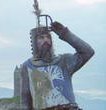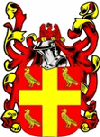treespider
Posts: 9796
Joined: 1/30/2005
From: Edgewater, MD
Status: offline

|
quote:
ORIGINAL: el cid again
quote:
I found this on the net http://www.faqs.org/docs/air/avb26.html :
Four Marauders were used in the torpedo-bomber role at the Battle of Midway in June 1942, scoring no hits and losing two of their number. Torpedo-carrying Marauders attacked the Japanese carrier RYUJO off the Aleutians the same day, but no hits were scored. These were the first and last times the Marauder saw combat with the USAAF as a torpedo bomber.
This information is correct but incomplete - so its conclusions are wrong.
Apparently some were also used in the SW Pacific area in 1942, and with more than one air force. I do not know details of successes, except there were some. Also, there is a USMC version of the B-25 called PBJ which was torpedo armed. By 1943 there were eight squadrons - and by 1945 four more were in training.
From - http://home.att.net/~jbaugher2/b26_19.html
"The Marauder could carry an 18-inch 2000-pound torpedo slung on an external rack underneath the fuselage. On the ground, the torpedo only cleared the ground by about four inches when taxiing. In June, the B-26A made its debut as a torpedo bomber, being used against Japanese warships during the Battle of Midway. Four Marauders were equipped with external torpedo racks underneath the keel and took off on June 4, 1942 in an attempt to attack Japanese carriers. The torpedo runs began at 800 feet altitude, the B-26s then dropping down to only ten feet above the water under heavy attack from Japanese fighters. Two of the Marauders were lost in this action, and the other two were heavily damaged. No hits were made on the Japanese carriers. The B-26 was much too large an aircraft for this type of attack."
and From - http://www.vectorsite.net/avb26.html
"While the USAAF was grappling with the difficulties of getting the new bomber into operation, in October 1941 Martin began delivering the next variant, the "B-26A", with 139 built. This variant dealt with the range issue by accommodating a removeable fuel tank in the bombbay. The B-26A had torpedo shackles on the bombbay doors to allow it to carry a single 900 kilogram (2,000 pound) torpedo; replaced the nose and tail 7.62 millimeter guns with 12.7 millimeter guns; and changed the electrical system from 12 to 24 volts DC.....
Four Marauders were used in the torpedo-bomber role at the Battle of Midway in June 1942, scoring no hits and losing two of their number. Torpedo-carrying Marauders attacked the Japanese carrier RYUJO off the Aleutians the same day, but no hits were scored. These were the first and last times the Marauder saw combat with the USAAF as a torpedo bomber. ...
...The British apparently used them initially as torpedo-bombers in the Mediterranean with considerably greater success than had been enjoyed by the USAAF in that role. Marauders were also used for minelaying, maritime reconnaissance, and like the Maryland before it, as a fighter to intercept German transports flying to Africa. They later saw RAF and SAAF service in Italy and in support of Tito's partisans in Yugoslavia...
...This meant that the next production version was actually the "B-26F", which was put into production at the Baltimore plant in 1943, with 300 built. The B-26F was similar to early-block B-26Bs with -41 engines, but had the wing incidence shifted up by 3.5 degrees to shorten the takeoff run, though at a cost of a lower top speed. Experienced Marauder crews tended to regard such an "improvement" as a step backward. Provision for torpedo carriage was also removed. 200 of these aircraft were supplied to the RAF as "Marauder IIIs".
And for an interesting synopsis of the B-26 in the Pacific....http://www.csd.uwo.ca/~pettypi/elevon/baugher_us/b026-18a.html
And the B-26 in general...http://www.csd.uwo.ca/~pettypi/elevon/baugher_us/b026i.html
_____________________________
Here's a link to: Treespider's Grand Campaign of DBB "It is not the critic who counts, .... The credit belongs to the man who is actually in the arena..." T. Roosevelt, Paris, 1910 |
 Printable Version
Printable Version














 New Messages
New Messages No New Messages
No New Messages Hot Topic w/ New Messages
Hot Topic w/ New Messages Hot Topic w/o New Messages
Hot Topic w/o New Messages Locked w/ New Messages
Locked w/ New Messages Locked w/o New Messages
Locked w/o New Messages Post New Thread
Post New Thread